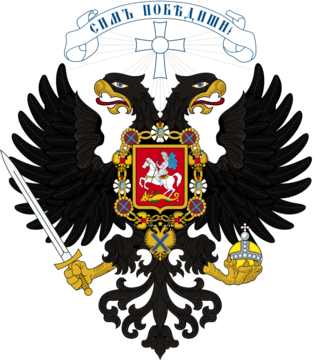
The White Army or White Guard, also referred to as the Whites or White Guardsmen, was a common collective name for the armed formations of the White movement and anti-Bolshevik governments during the Russian Civil War. They fought against the Red Army of Soviet Russia.
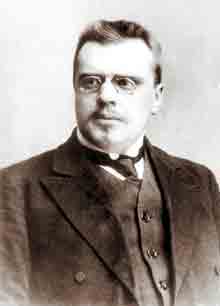
Viktor Nikolayevich Pepelyayev was a Russian politician, a supporter of Admiral Alexander Kolchak, and the Chairman of the Council of Ministers of the State of Russia.

Siberian regionalism is a political movement that advocates for the formation of an autonomous Siberian state. The idea originated in the mid-19th century and reached a high tide with the White movement military activities of Aleksandr Kolchak (1874–1920) and Viktor Pepelyayev (1885–1920) during the Russian Civil War of 1917–1922.
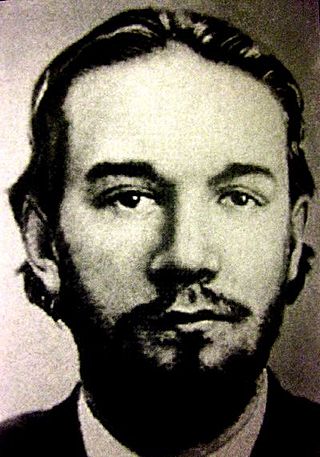
Vladimir Mikhailovich Zenzinov was a member of Russia's Socialist-Revolutionary Party, a participant of the First (1905), Second, and Third Russian Revolutions, and an author of a number of books.

Nikolai Dimitrovich Avksentyev was a leading member of the Socialist-Revolutionary Party (PSR). He was one of the 'Heidelberg SRs', like Vladimir Zenzinov. These SRs were influenced by neo-Kantian philosophy and Marxism. As Chairman of the Provisional All-Russian Government, he headed the Russian state from September 23 to November 18, 1918. He was overthrown and arrested by the Minister of War, Alexander Kolchak, who proclaimed himself the Supreme Ruler of Russia.

The Siberian Army was an anti-Bolshevik army during the Russian Civil War, which fought from June 1918 – July 1919 in Siberia – Ural Region.

The Provisional Siberian Government was a short-lived government in Siberia created by the White movement in 1918.
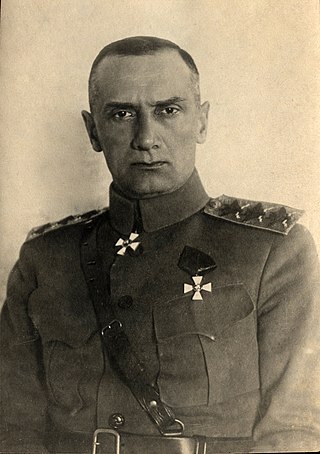
Alexander Vasilyevich Kolchak was a Russian admiral, military leader and polar explorer who held the title of Supreme Ruler of Russia from 1918 to 1920 during the Russian Civil War, though his actual control over Russian territory was limited. Previously, he served in the Imperial Russian Navy and fought in the Russo-Japanese War and World War I.
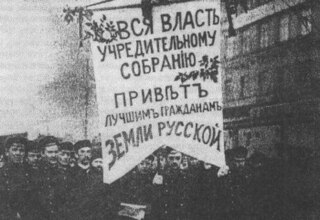
Events from the year 1918 in Russia

Leonid Aleksandrovich Ustrugov was a Russian railway engineer who served as the Minister of Railways in the White government of Admiral Alexander Kolchak during the Russian Civil War from 1918 to 1920. He later became a victim of Stalin's Great Purge.

The Russian State was a White Army anti-Bolshevik state proclaimed by the Act of the Ufa State Conference of September 23, 1918, “On the formation of the all-Russian supreme power” in the name of “restoring state unity and independence of Russia” affected by the revolutionary events of 1917, the October Revolution and the signing of the treaty of Brest-Litovsk with Germany.

The Supreme Ruler of Russia, also referred to as the Supreme Leader of Russia, was the head of state and supreme commander-in-chief of the Russian State, an anti-Bolshevik government established by the White Movement during the Russian Civil War. For nearly two years from November 1918 until April 1920, the armies of the White Movement were nominally united under the administration of the Russian State, during which the Russian State claimed to be the sole legal government of Russia. The office's sole holder for most of its existence, and the only one to officially adopt the titles and functions of the Supreme Ruler, was Admiral Alexander Kolchak, who was elected to the position by the All-Russian Council of Ministers following the November 18 coup which overthrew the Directory.
The State Conference in Ufa which took place on September 8–23, 1918, in the city of Ufa in southern Russia was the most representative forum of anti-Bolshevik governments, political parties, Cossack troops, and local governments of eastern Russia.

The Bashkir Government was the supreme executive authority of Bashkiria.

An index of articles related to the Russian Revolution and the Russian Civil War period (1905–1922). It covers articles on topics, events, and persons related to the revolutionary era, from the 1905 Russian Revolution until the end of the Russian Civil War. The See also section includes other lists related to Revolutionary Russia and the Soviet Union, including an index of articles about the Soviet Union (1922–1991) which is the next article in this series, and Bibliography of the Russian Revolution and Civil War.
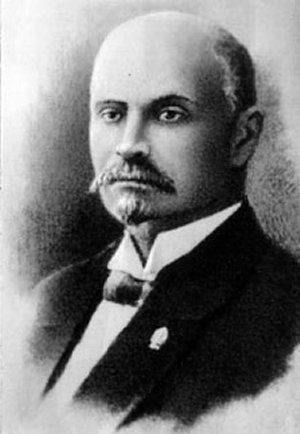
Pyotr Vasilievich Vologodsky was a Russian statesman, public figure, and mason. He was the first chairman of the Council of Ministers of the Russian state and the second and last chairman of the Provisional Siberian government.

Sergei Nikolaevich Rozanov was a lieutenant general, a leader of the White movement.

The Russian Government was the highest executive body in White-controlled parts of Russia during the Russian Civil War, formed as a result of the coup of 18 November 1918 in Omsk headed by Alexander Kolchak.

The Kolchak Coup or Omsk Coup refers to the events of November 18, 1918, when members associated the left wing of the Directory were arrested by members of the White Army in Omsk and the subsequent decision of the All-Russian Council of Ministers to transfer sole supreme power to the Minister of Military and Naval Affairs Alexander Kolchak.


















